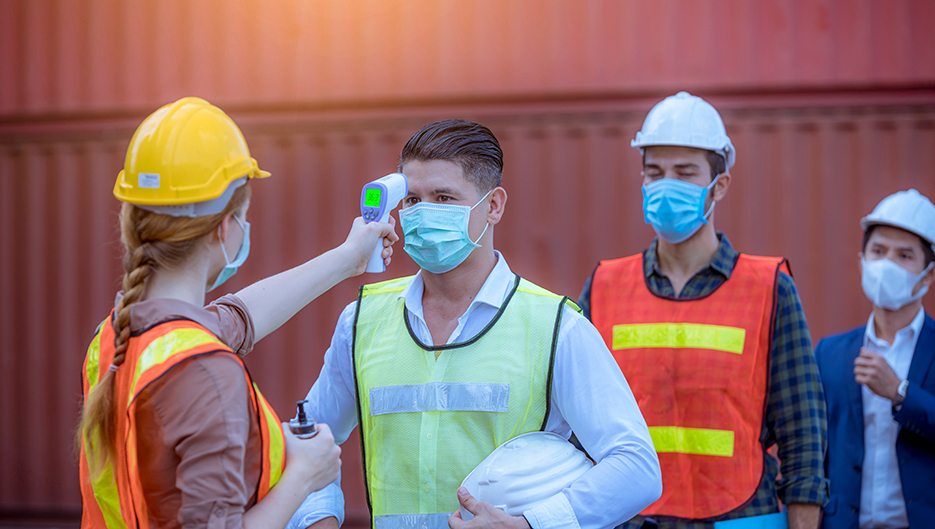4 Tips for Forming a Safety ‘Bubble’ in the Industrial Workplace
July 16, 2020

A new social concept is floating around as coronavirus concerns endure – the quarantine ‘bubble.’ Basically, a bubble is a group of individuals who have agreed to interact exclusively and observe shared safety guidelines. The idea is to allow people to retain some sense of normalcy, while preventing spread of the virus.
For industrial employers aiming to keep essential workers safe and operations productive, the bubble analogy offers some insight. With a few alterations, several of the rules and etiquette governing the safety of these social groups can apply to an industrial workforce.
Here are four ways companies can use the ‘bubble’ theory in their workplace safety plan:
1 – Define Who’s Allowed In
When forming a social bubble, friends and family carefully consider who they can trust in their pod. In the same vein, employers must limit who can be allowed on a worksite. This group should be limited to essential personnel and visitors.
Equally important is laying down ground rules for the defined team. This includes how they enter, exit, and move within the worksite each day. Rigorous screening prior to entry and limited movement once within can help to keep all team members healthy.
2 – Set Behavioral Expectations
To minimize spread of Covid-19, members of social bubbles agree to a set of rules. These typically include allowing a pre-pandemic level of contact with one another, while practicing social distancing outside of the group. Behavioral expectations must be clearly put forth in a workplace safety bubble as well.
Worker safety expectations may include protective behaviors such as respiratory etiquette, frequent hand washing, the use of personal protective equipment, and safe distancing. It can be especially helpful to offer training and post signs of these behaviors in easily-seen areas around the worksite.
3 – Enforce the Boundaries
Once social bubble safety rules are set, holding members to them can be tricky, hinging heavily on trust. In the workplace, however, enforcing boundaries around how team members will coexist – such as safe distancing practices – can be managed effectively through enhanced procedures and technology.
Wearable tech can help maintain the integrity of a workplace safety bubble. These smart devices provide proximity alerts to workers whenever they come too close to each other, building awareness and social distancing skills. Furthermore, they help team members reduce the duration of close contacts, often decreasing timeframes from minutes to seconds.
4 – Plan for Leaks
Despite clear expectations and firm boundaries, breaches to a safety bubble can happen. If one person becomes symptomatic, or tests positive for the virus, it could mean multiple members have been exposed, or may already be infected.
When such a leak presents in the workplace, contact tracing can help leaders take quick actions and make effective decisions to reduce the spread of illness. Wearable technology provides management with a highly-effective contact tracing tool. It allows for the production of precise, reliable reports on every contact with a symptomatic worker and their duration.
Navigating Changing Times
As we simultaneously reach for a bit of normalcy and added security during the current health pandemic, our interactions, expectations, and safeguards are evolving to fit the times. Forming a ‘bubble’ – socially, or in the workplace – offers a unique approach to increased safety and reduced spread.
Haytham Elhawary
CEO & Cofounder, KINETIC
FEATURES
RESOURCES
2019 KINETIC © All rights reserved.